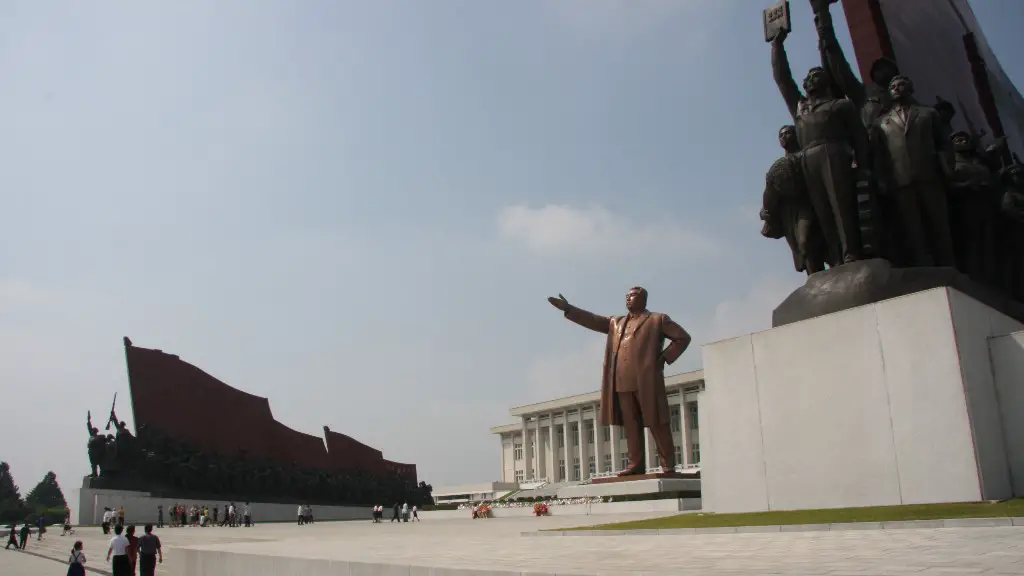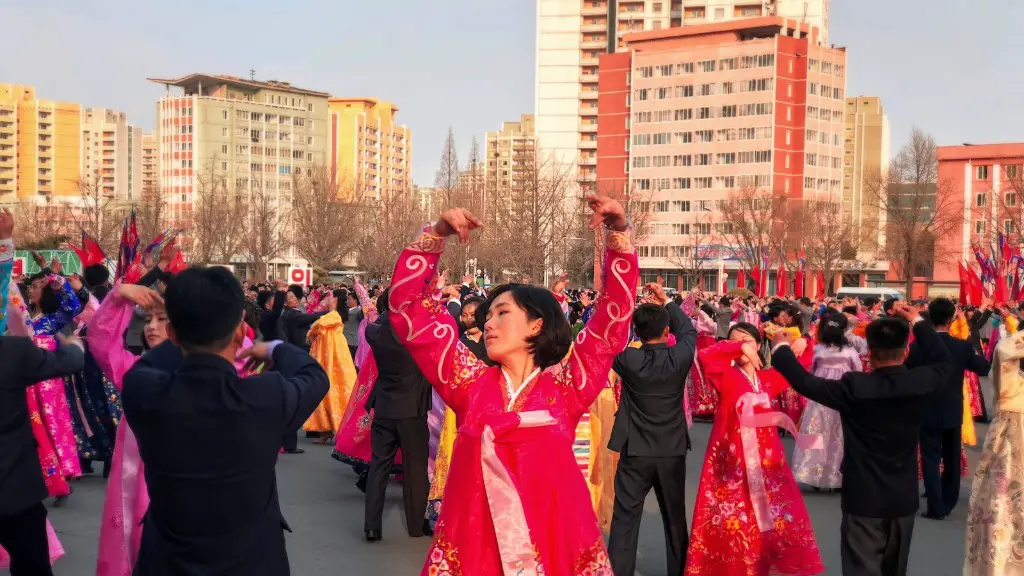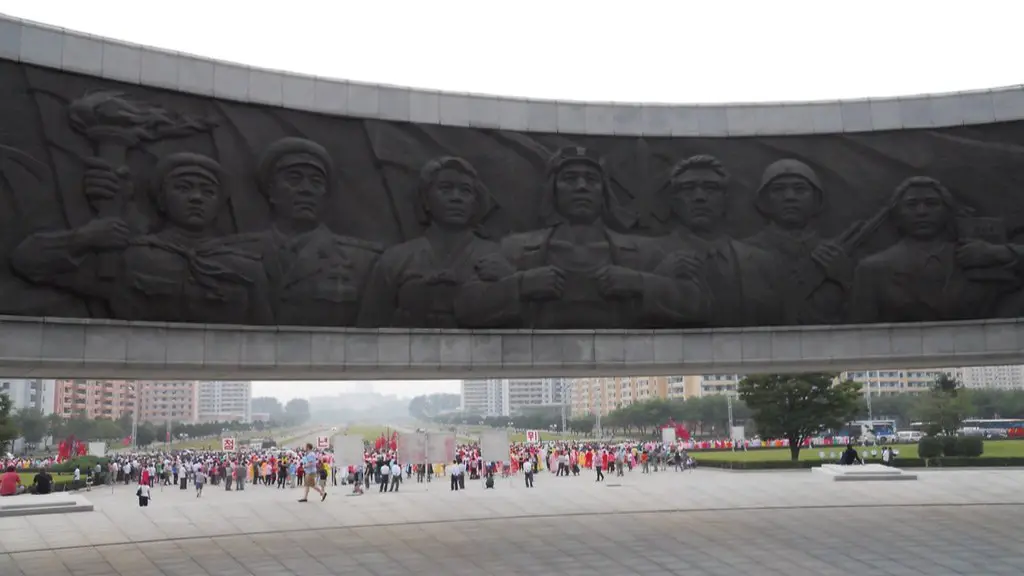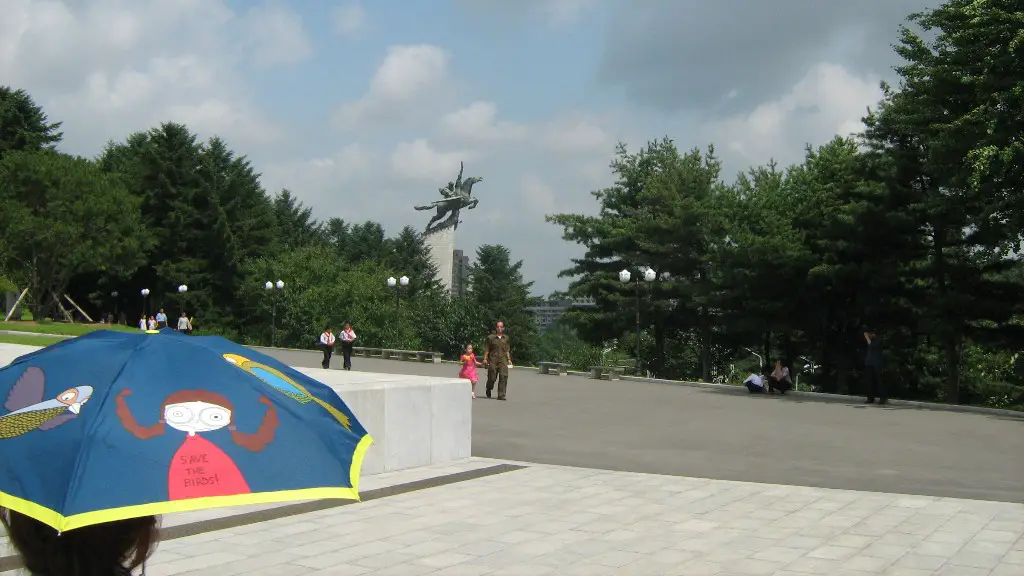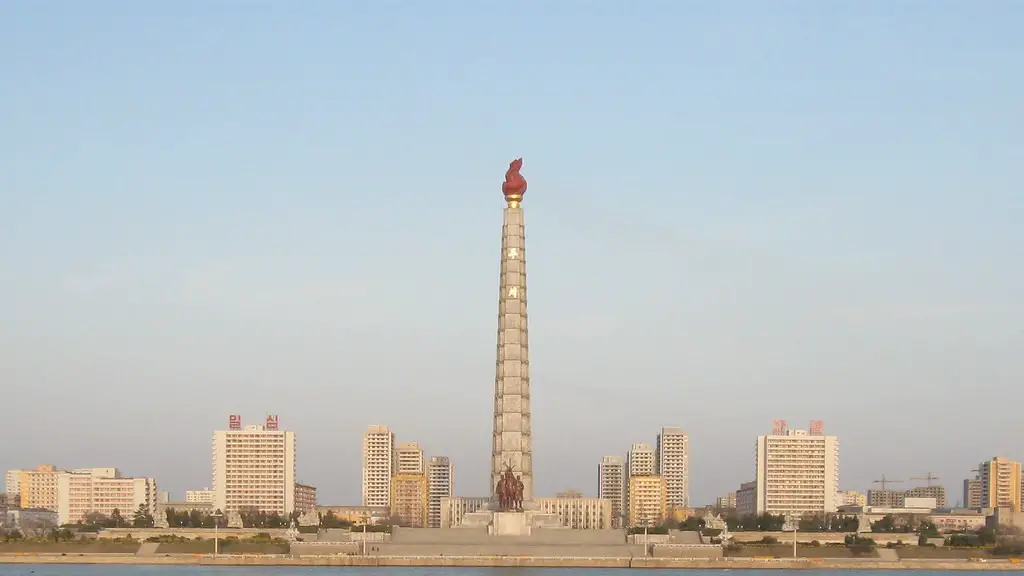The first United States bomb on North Korea began in 1950 and ended with the armistice in 1953. During this period, the US had undertaken a number of military efforts against Kim Il-Sung’s communist forces in North Korea. These included the “air dominance” campaign from August 1950 to June 1951, which aimed to interdict the North Koreans air force, the Incheon Invasion to capture Seoul and the Chosin Reservoir campaign to cut off North Korea’s supply lines. In total, the United States dropped 635,000 tons of bombs on North Korea.
At the time of the bombing, the United States was trying to divert North Korea forces away from South Korea. The bombing was used as a way of disrupting any expected counterattacks as well as to prevent more North Korean forces from entering the south. It is reported that by late 1952, some 75 percent of Korea’s industrial infrastructure had been destroyed by the combined air and ground forces of the United Nations. The resulting destruction crippled the North Korean economy and left its leaders vulnerable to additional pressure.
The actual targets of the US air bombardment was mainly to disrupt railroad lines, roads and bridges. In addition, strategic bombing sites in the North Korean capital Pyongyang were in focus and as many as 50,000 North Korean civilians are reported to have died as a result of US bombing. Reports from China at the time also noted that the US had used napalm and incendiary bombs in the campaigns.
The US Army at the time defended their actions as necessary in the war, arguing that the destruction of transportation infrastructure was crucial to prevent supplies of ammunition and weapons getting to North Korea forces. They also argued that these tactics were in line with the Geneva Convention at the time as the targets were mainly military related.
However, the US bombing of North Korea has still had a significant impact on the society till today. With an estimated 10-30% of the North Korean population dying between 1950-1953, the war had a significant human cost. This is mainly due to the destruction of infrastructure and the lack of resources to rebuild. Even today, there are reports of areas that have yet to be rebuilt, like the Pyongyang railroad station, due to the destruction of these sites during the conflict. The air bombardment also played its part in the further division of the Korean peninsula.
Environmental Impact
In addition to the human cost, the US bombing of North Korea also had a significant environmental impact. The bombings destroyed forests and jungles, as well as rivers and lakes. In addition, a number of nuclear weapons were tested by the United States during the conflict. The most recent estimate is that the US tested 12 atomic bombs on various locations throughout North Korea. This has led to long lasting environmental pollution, which has had an serious effect on the health of the population.
The most notable long-term environmental issue from the US bombing of North Korea is radiation. A number of studies, most recently in 2014, have highlighted the high levels of radiation in North Korean cities and towns, particularly located around former targets of US airstrikes. The radiation levels are reported to be “extremely high” and the long term impact on the health of the population in these areas is yet to be measured.
Some experts have estimated that there are nearly 500,000 people living in regions impacted by contamination from radiation, with the worst cases in Pyongsan, the site of a previous uranium processing plant. In addition, some have suggested that the United States and other members of the United Nation should provide support to North Korea to assist with the clean up of these impacted areas.
Current Relationship
Today, 73 years after the start of the war, the relationship between North Korea and the United States is still strained. North Korea continues to heavily militarize its border and has engaged in nuclear testing and ballistic missile launches. In response, the United States has engaged in economic sanctions and increased its military presence in South Korea. Even though the two countries have no formal diplomatic ties, the US remains keen to engage in dialogue with North Korea.
The bombing by the US during the 1950s still lingers in the background of the current relationship between the two countries. North Korea has continually asked for a formal apology and reparations for the damage caused by the bombings, but the United States has so far refused. This unease has become a key factor in the ongoing confrontation between the two countries, with North Korea viewing the US presence in South Korea as an act of belligerence.
International Reactions
The international community has been crucial in setting up diplomatic negotiations between the two countries. A number of different multilateral discussions have been held over the years, such as the Six-Party Talks in 2003, the fourth round of which took place in 2008. In addition, a number of different regional organisations, such as the Association of Southeast Asian Nations, have sought to broker peace between North Korea and South Korea.
The international community also has had an impact on the US bombing of North Korea. In 2009, the United Nations General Assembly adopted a resolution calling for an end to the use of nuclear weapons and urging the United States to apologize and take responsibility for the bombings the country had undertaken in Korea. The resolution, however, was not put to a vote.
The international community has also been trying hard to de-escalate the situation on the Korean peninsula. In July 2018, South Korean President Moon Jae-in and North Korean leader Kim Jong-un agreed to de-escalate the conflict, which they termed as the “Panmunjom Declaration”. Despite this, the agreement has so far failed to lead to any real peace between the two countries.
US Actions in North Korea Today
In spite of the ongoing tensions, the US does still take part in some activities in North Korea. For example, there are still some US troops stationed in the demilitarized zone (DMZ) between North and South Korea, though the total number is only some 28,000 individuals. US forces do continue to train with South Korean forces, but in a less confrontational fashion.
The United States also continues to provide humanitarian aid to North Korea. The US government provides millions of dollars of aid each year, mostly through its food assistance programs. The US aid includes agricultural and medical support, as well as relief efforts for natural disasters. While these efforts have been welcomed by the North Korean government, the United States maintains that the aid will only be provided when certain conditions are met, most notably the advancement of human rights.
At the same time, the United States is continuing to raise concerns about the human rights situation in North Korea. The US State Department’s annual Human Rights Report identifies several specific issues in the country, including employee rights, freedom of expression and press, freedom of assembly and association, religious freedom and freedom of movement.
Conclusion
The US bombing of North Korea during the 1950s had a significant impact on the country and its population. While the US Army defended the actions as necessary in the war, the devastating effects of the bombings still linger in North Korea today. The United States has yet to formally apologize for its actions, though it does provide some humanitarian aid to North Korea. The international community is also working hard to de-escalate the situation on the Korean peninsula and US forces are still present in the demilitarized zone between North and South Korea.
